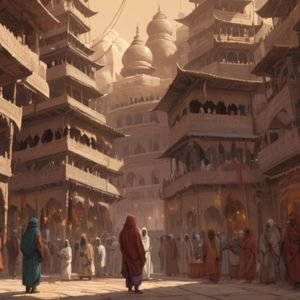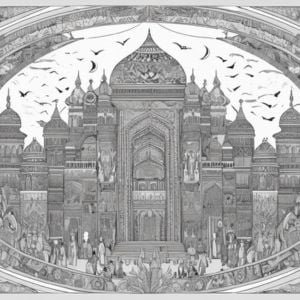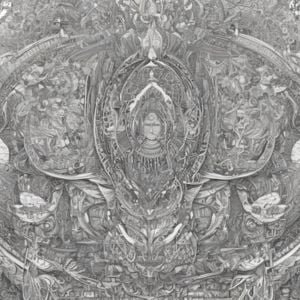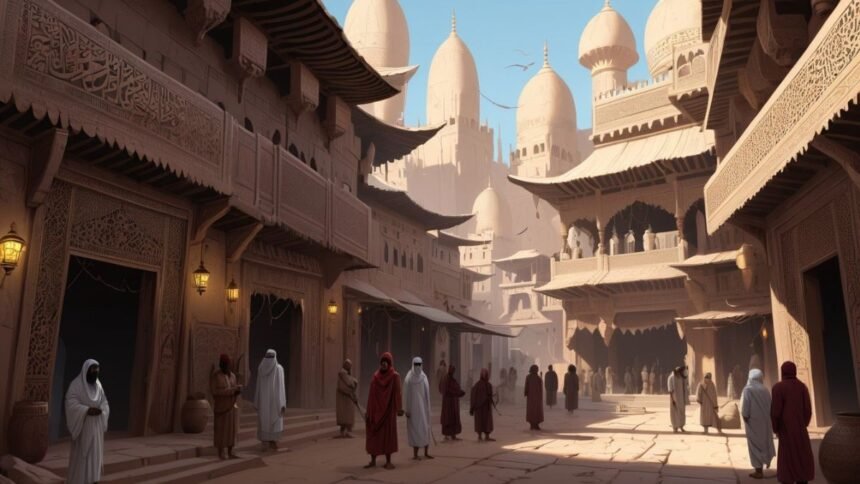Masqlaseen stands out as a spectacle of intricate artistry and community values in a world brimming with cultural diversity and enigmatic traditions. Described in whispers and celebrated with emphatic applause, Masqlaseen remains a steadfast enigma to outsiders while the simmer with rich history and personal significance among its practitioners. Each year, during the heart of the festival season, droves of individuals engage in a collective act of almost spiritual exuberance, adorned with vibrant masques and effervescent exuberance.
But what exactly is Masqlaseen? Delving deep into this illustrious tradition, our expansive investigation illuminates the story of Masqlaseen from its origins to its modern manifestations. This post aims to demystify this festival favorite, showcasing the essence of Masqlaseen and the pivotal role it plays in weaving the tapestry of our cultural experience.
Introduction to Masqlaseen: A Brief Overview

Masqlaseen, a compound name meaning ‘Masque’ and ‘Celebrate,’ is a community gathering characterized by wearing elaborate masques. Beyond simple party accessories, these masques are deeply rooted in symbolisms that traverse time and space, embodying archaic deities or delineating the dance of life and death. The festival’s core is the masque, and the wearer who dons it enters a realm of anonymity. This psychological transformation heralds liberation and an inextricable connection with the collective soul of the festival.
This enigmatic festival fosters an atmosphere of inclusivity and non-judgment, where one’s worth is not tethered to one’s identity but to one’s jubilant participation. In this sense, Masqlaseen marks a temporal reprieve, a brief pause in the rigidity of societal norms where joy and unity trump individual concerns.
The Origins of Masqlaseen: Tracing Back to Ancient Rituals
To understand the roots of Masqlaseen, we must venture into the annals of ancient mysticism and ritual. Archaeological evidence and folkloric tales often trace its origin to pre-Christian celebrations, which honored the equinoxes and solstices. These moments, marking the cyclical nature of life and the celestial dance were heralded with masquerades and sacred dramas.
Among the most renowned is the depiction of fertility celebrations, where participants would take the guise of animals or deities to invoke the blessings of fecundity. Other theories suggest an association with the masked processions in tribal rites, where masques acted as conduits for the spirit world. Despite diverse origins, the through-line is the transcendence of the material realm to commune with the divine in a manner not limited by the visible self.
The Significance of Masqlaseen in Modern Society
In the modern context, Masqlaseen continues to serve a critical role, albeit with contemporary inflections. At its heart, it remains a spectacle of community bonding, an occasion that unshackles individuals from the mundane and invites them into a shared narrative of euphoria.
Masqlaseen speaks profoundly to the human need for festival and catharsis — the leaping fires of passion and the collective breath that sustains the flames. Here, class, creed, and race barriers are momentarily eclipsed by the shimmering veils of masques, and individuals revel in a fluid identity that melds with the festive collective.
YOU MAY ALSO READ: SEVENTY YEARS
Political Implications of Masqlaseen
Masqlaseen, with its layered traditions and deeply ingrained practices, reaches beyond mere spectacle and dances into political expression and dissent. In times of social upheaval or political tension, the masques of Masqlaseen become not just veils of festivity but also powerful symbols of anonymity that protect and empower voices of opposition. This anonymity affords participants a rare freedom of expression, allowing for the articulation of dissent without fear of retribution.
In several instances, Masqlaseen has served as a backdrop for peaceful protests, where the confluence of culture and anonymity has catalyzed significant social movements. The festival adopts a dual role — celebrating cultural heritage while offering a scaffold for advocacy and change. This unique positioning underscores the complex interplay between artistic practices and political realities, marking Masqlaseen as a significant cultural event with the power to influence not just individual lives but the broader societal structure.
Masqlaseen Across Different Cultures: A Comparative Analysis

Masqlaseen exists in many forms globally, each manifestation adding nuance to its collective philosophy. The Carnival of Venice and the Mardi Gras of New Orleans encapsulate the regal splendor of masquerades, with parades of performers adorning intricately designed masques, parading through ornate streets, and reveling in artistic and culinary exuberance.
In contrast, the Day of the Dead in Mexico or the Egungun festival in Nigeria offer somber rites, where the living honor and commune with their departed through masques. The underlying theme, however, is a collective mythological landscape where the human and the divine engage in a delicate waltz, crossing paths and exchanging roles through the masque’s veil.
How Masqlaseen Has Evolved: Trends and Transformations
If Masqlaseen is a river, its flow carries time’s detritus, constantly molding and reshaping its course. The festival has witnessed the currents of history transform its essence, from a sacred rite to a form of political satire during medieval Europe to a colorful display of irrevocable identity transformations in present-day Pride parades.
In our social media and technology era, Masqlaseen has transcended physical boundaries, with virtual masquerades uniting individuals across continents. The masques of today are not always physical; they are avatars, emojis, and the digital personas we adopt, shaping our cyber celebrations.
The Future of Masqlaseen: Predictions and Innovations
As we gaze into the future, it’s exciting to anticipate the innovative directions Masqlaseen might take. Virtual reality promises a realm where the lines between the real and the masqued are further blurred, offering immersive experiences that redefine the festival’s core principles.
The prospect of Masqlaseen evolving into a forum for societal reflection is equally intriguing. Identity, privacy, and technological interconnectivity might become new masques, and the festival will be an arena for discourse draped in the colorful vocabulary of symbolic masquerades.
Challenges and Preservation Efforts

Despite the vibrant evolution and significance of Masqlaseen, the festival faces notable challenges in the modern era. A primary concern is the dilution of its cultural essence amid globalization. Commercializing traditional festivals has led to losing authenticity, with Masqlaseen not immune to these trends. In many cases, the deep-rooted spiritual and communal intentions behind the masquerades are overshadowed by consumerist tendencies, threatening the preservation of its original form and purpose.
Additionally, while broadening the festival’s reach, the encroachment of digital culture poses questions about the tangible experience of community and spirituality that physical participation fosters. The risk of digital alienation is accurate, as virtual interactions may only partially capture the essence of unity and personal transformation that Masqlaseen traditionally promotes.
In response to these challenges, preservation efforts are gaining momentum. Cultural activists and communities are working to safeguard the festival’s intangible cultural heritage through educational programs, restoring traditional practices, and encouraging participation that respects the original ethos of Masqlaseen. Governments and cultural organizations also recognize the need to support these initiatives, providing platforms and funding for festivals that adhere to authentic practices.
Preservation efforts also extend to the digital realm, with technologists and cultural practitioners exploring innovative ways to blend traditional elements with modern platforms. This includes virtual reality experiences that emphasize the festival’s artistic and spiritual roots, ensuring that the essence of Masqlaseen survives the test of time and technology.
These concerted efforts underscore a collective determination to honor the past while navigating the complexities of present and future expressions of Masqlaseen, ensuring its continuity as a vibrant testament to human creativity and communal spirit.
Conclusion: Reiterating the Importance of Masqlaseen and Its Role in Cultural Preservation
Masqlaseen is not merely a date in the festive calendar or an exotic trait stamped on tourist brochures. It is an intricate chapter in the narrative of human culture, a chapter that deserves preservation and examination. More than a source of entertainment, Masqlaseen acts as a mirror reflecting the communal ethos, the longing for unity, and the irrepressible human spirit that seeks communion and transcendence.
This collective masque we don marks not just the face but the soul, entwining our personal history with the shared chronicle of our kind. Its continued celebration ensures that the fabric of our cultural tapestry remains vibrant, woven with the treads of tradition.
Frequently Asked Questions
Q: What is the origin of Masqlaseen?
A: Masqla seen’s roots are diverse, tracing back to pre-Christian celebrations that honored the equinoxes and solstices with masquerades and sacred dramas. Its origin is a confluence of various cultural practices, including fertility celebrations and tribal rites.
Q: How does Masqla seen differ across cultures?
A: While sharing a common essence of celebrating identity and communion through masquerades, Masqla seen manifests differently across cultures. For instance, the Carnival of Venice focuses on regal splendor and artistic vitality, whereas the Day of the Dead and the Egungun festival emphasize honoring the deceased.
Q: Can Masqla seen be celebrated virtually?
A: With the advent of technology and social media, Masqla seen has found new life in virtual masquerades. These online celebrations allow participants from around the globe to share in the spirit of Masqla seen, showcasing the festival’s adaptability to modern platforms.
Q: How is Masqla seen relevant today?
A: Masqla seen remains a vital cultural practice, serving as a spectacle of community bonding and self-expression. It also acts as a forum for exploring contemporary issues like identity and privacy, reflecting societal changes and the human need for connection and celebration.










